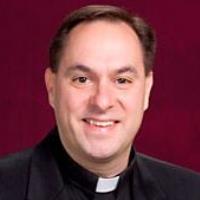This is the first installment in a series on worship and preaching. To tell you the truth, I’m not interested in giving preaching help for seasonal preaching, or suggesting ways that sanctuary décor or art can serve the sermon. There’s enough of that out there. I want to think about how preaching and liturgy shape each other, allowing them to interact so that they enrich each other.
To start with, just to put my cards on the table, Word and Meal go together, even if we’re not practicing weekly communion. While that sounds like a given, I’m not sure many of us have been trained to understand the connection. There is a mystery in how one speaks to the other.
You should know that the Eucharist saved my life. When I was growing up, we received first communion after two years of confirmation. That meant I took my first communion at about the same time I was entering adolescence. To state the obvious: it wasn’t a fun time. There was so much swirling inside me; so much angst; so much self-doubt; so much inferiority. I was convinced that if anyone knew what I was really thinking about, I would be ushered out of the church immediately. Yet, when I went forward to communion, the pastor, who seemed oblivious to my depravity, put bread in my hand and said, “The body of Christ given for you.”
I don’t remember many sermons, but I experienced a promise in those words. For some reason, they took root in my identity, and grace grew among the tares of my adolescent struggles. “For you.” The love of God began to shape me. How that came to be true, I’m not exactly sure, except that I believe preaching had something to do with it. While I don’t remember many of the three-point-and-a poem sermons that I heard, I think they prepared me to come to the table and hear a promise, a good word spoken among the many bad words that my growing brain and our convoluted society were speaking.
Sometimes I suspect that those of us who preach forget the sermon’s relationship to the table. We tend to think of sermons as having a life of their own, related to a text or to an occasion. Since we put so much time into perseverating and researching and writing and practicing, we come to believe that the sermon is central. Most of us have inherited traditions that believed that for a long time, even as they moved into more frequent celebrations of Holy Communion.
What if one of the central roles of the sermon is to open us to Christ’s promise in bread and wine? When we set Word and Meal next to each other, our preaching becomes sacramental preaching. It becomes a welcome to the table. It gives us words to frame our experience. It shapes our experience of the body. Or it becomes an invitation to the font, a framing of death and resurrection that comes in water and word.
Now, I don’t mean to say that every sermon is a description of sacramental doctrine. That would be boring. Assigned texts lead us in many creative directions, speaking to our communities and to the world. They are prophetic and pastoral. They are historical and parabolic. They are didactic and mysterious. But what if they are also Eucharistic? What if we listen for a relationship to what we to do in the liturgy? What if we strain our ears for messages of incarnation and embodiment, trusting that gospel words always take some concrete form? What if the conclusion of the sermon is in a hand outstretched, rather than in a brilliant conclusion or a definitive “Amen?” As we prepare to preach, let’s keep one eye on the texts and one eye on the table.
Bradley Schmeling’s bimonthly Working Preacher column, “Designing the Mystery,” looks at how to plan worship and preaching that is in step with the liturgy.

